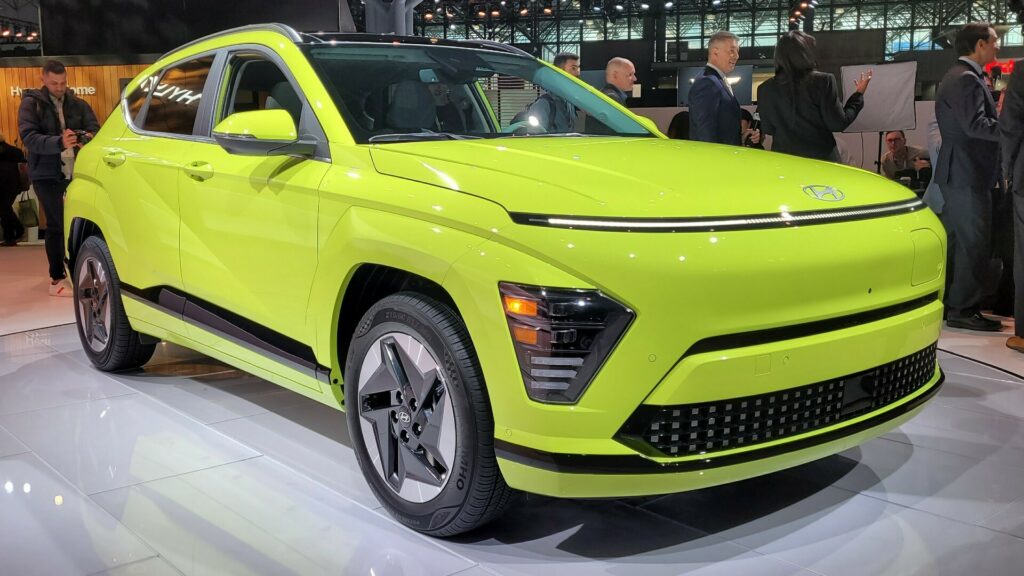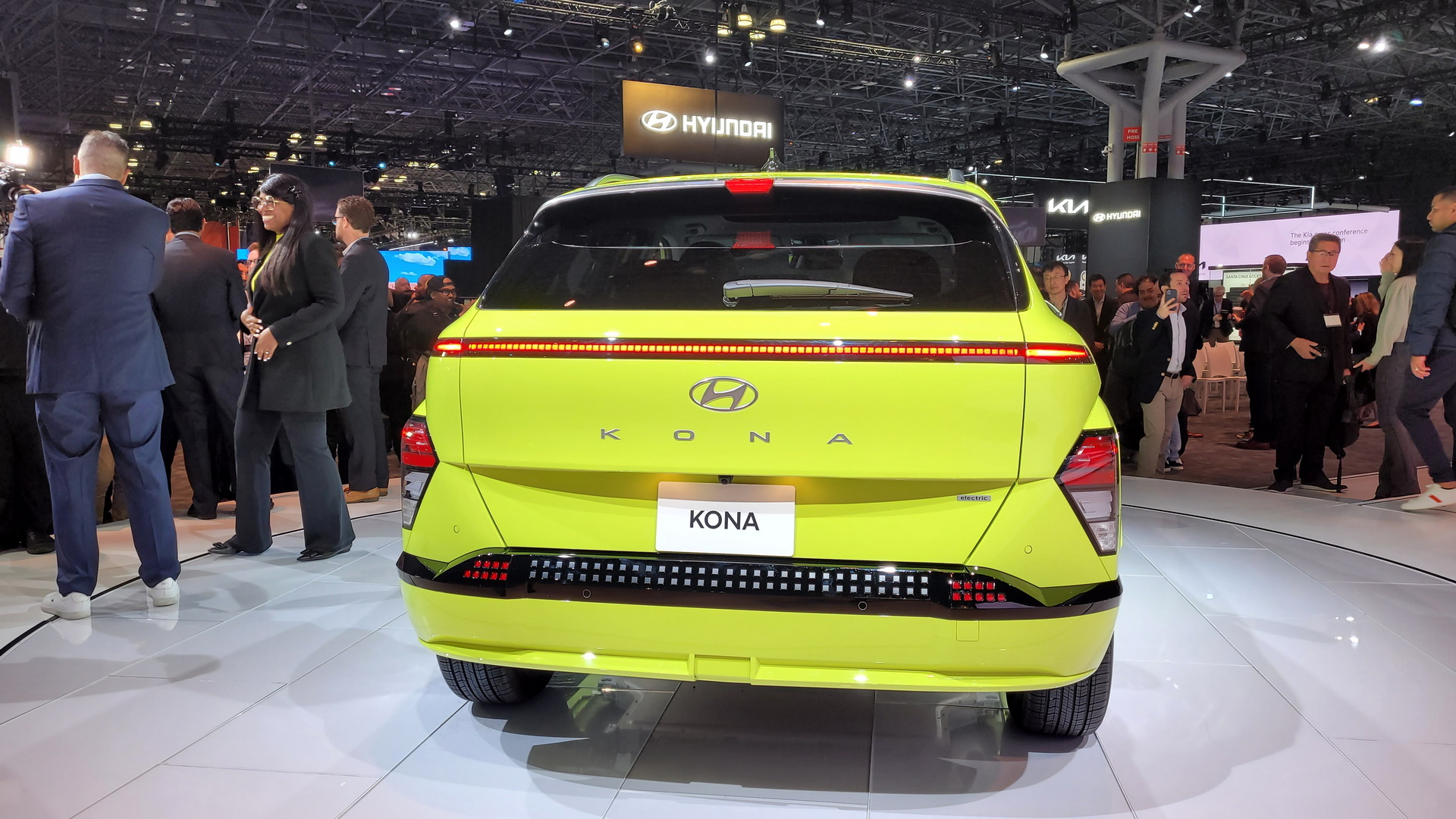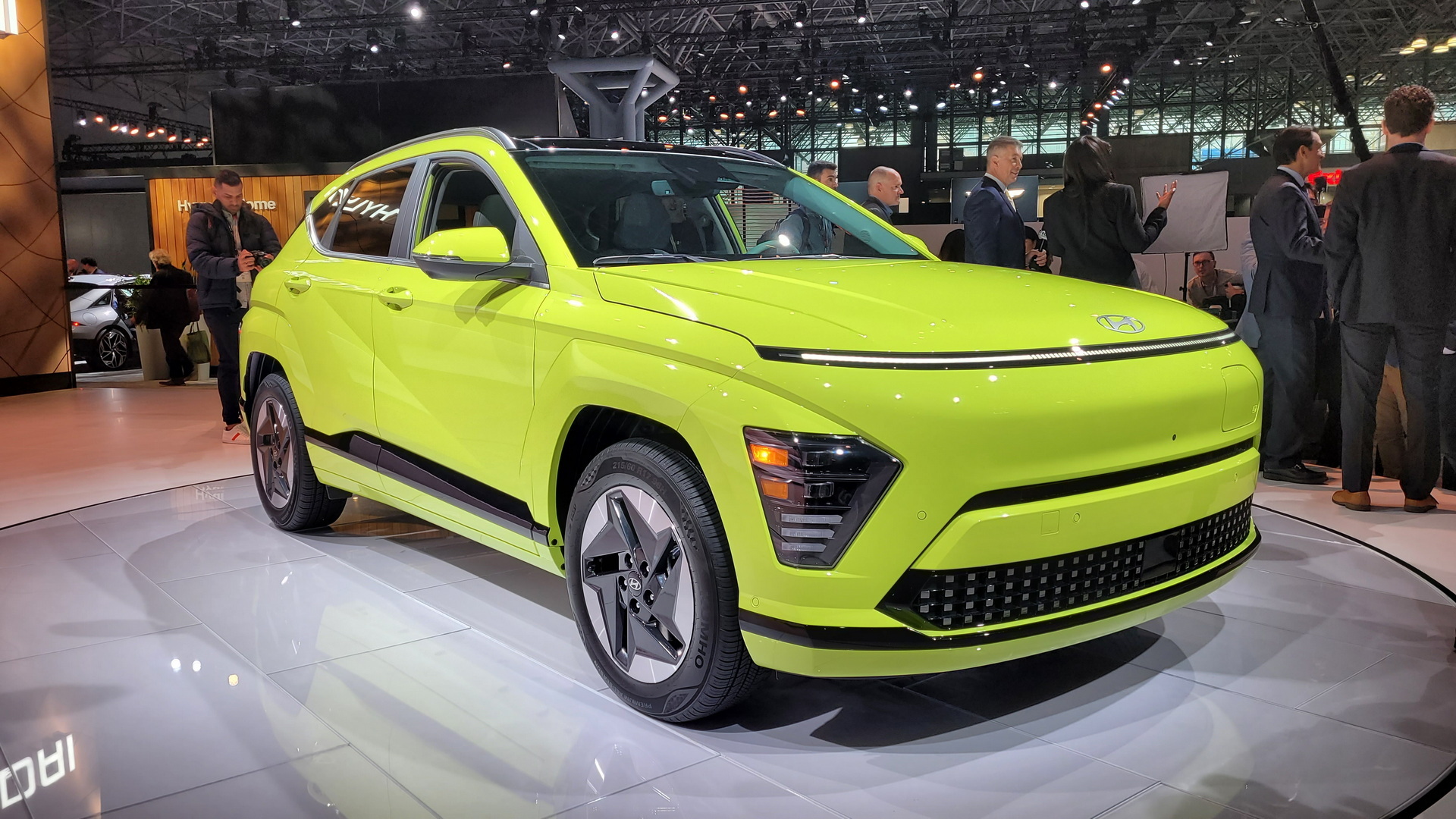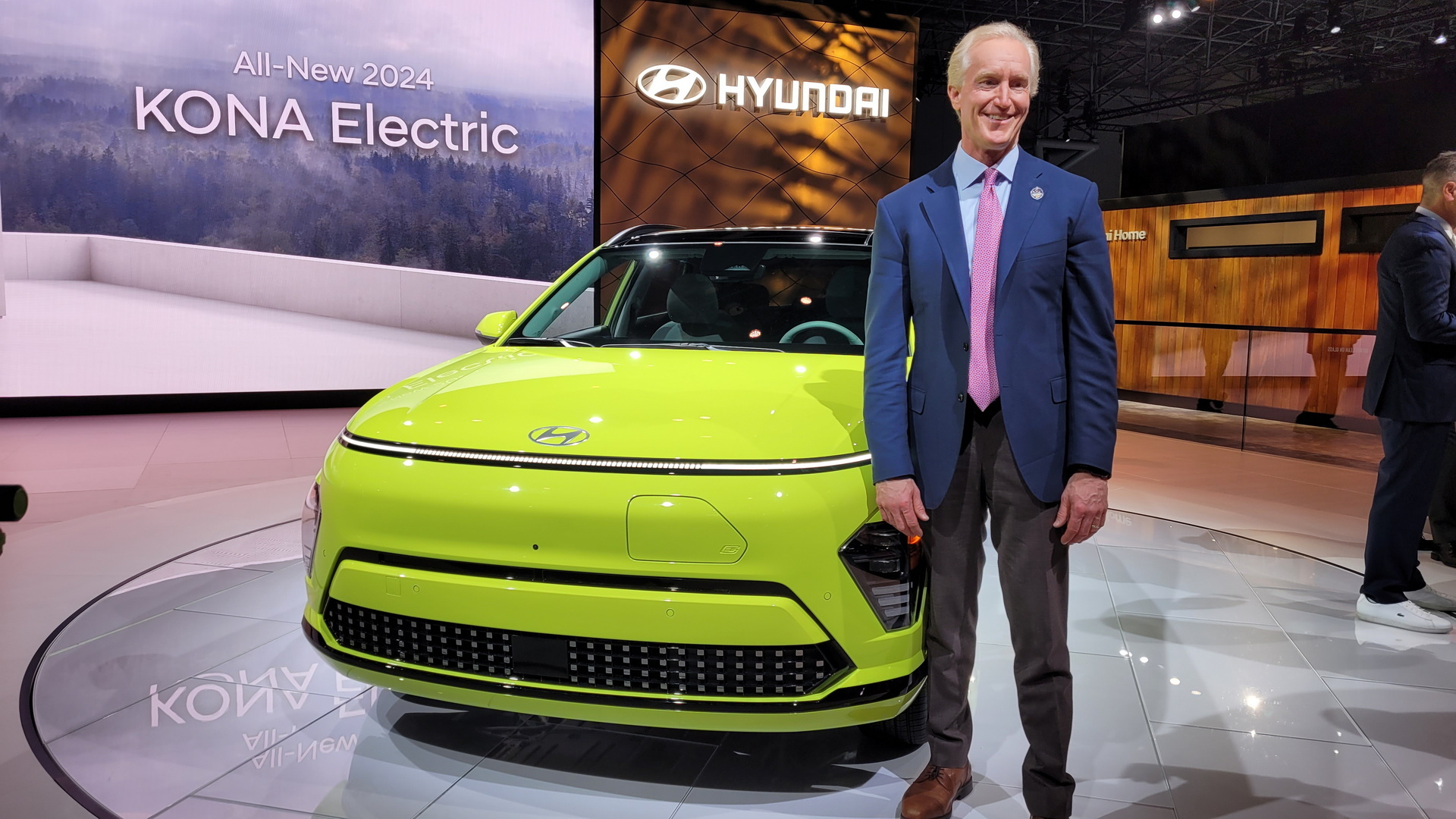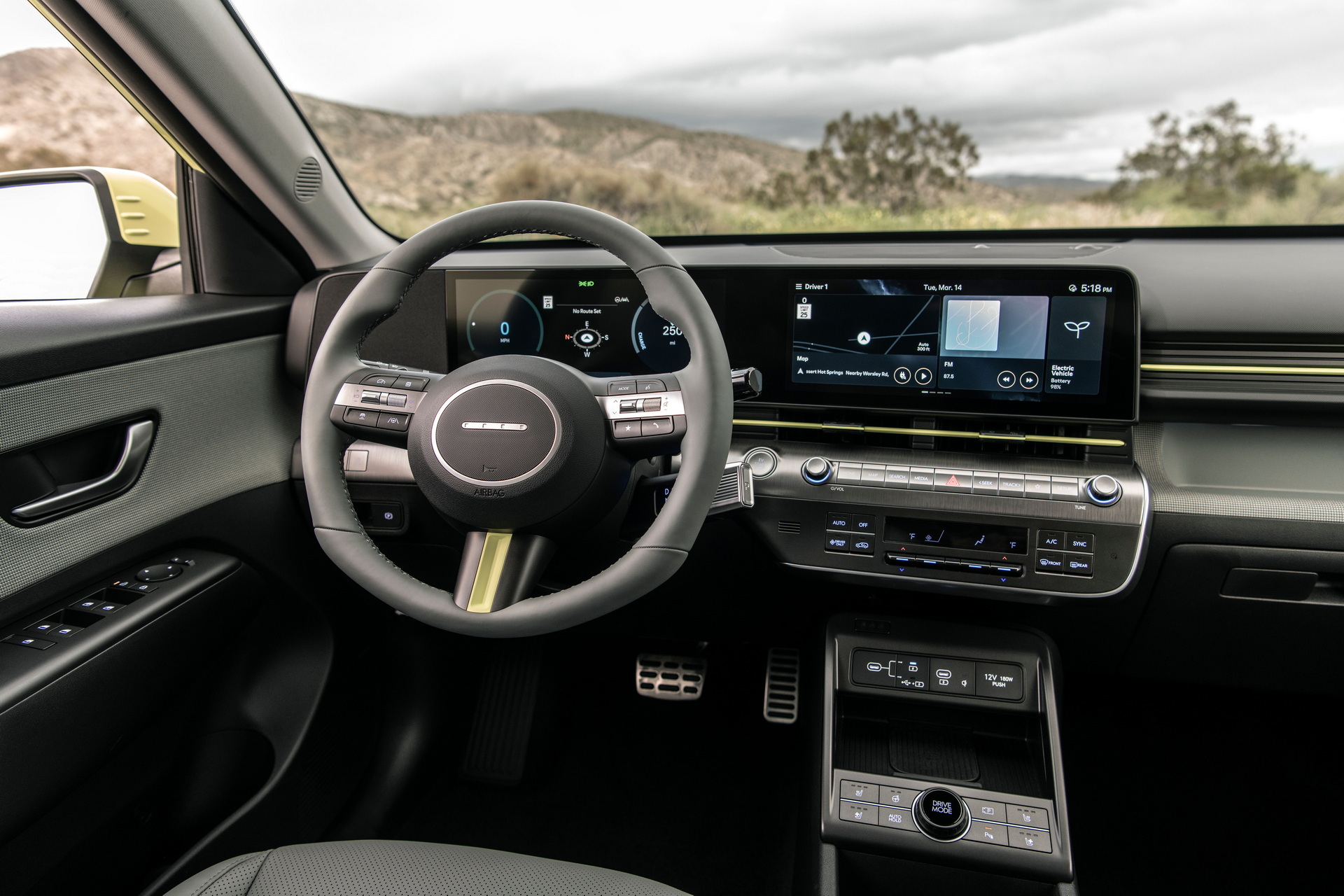The second generation of the Hyundai Kona arrived in North America for its local debut at the New York Auto Show later this week. The highlight of the range is the new Hyundai Kona Electric which is offered with two different battery capacities and power outputs, plus some EV-specific styling touches differentiating it from its ICE-powered counterparts.
The zero-emission variant of the new Hyundai Kona debuted in its home market in South Korea last month, featuring the same specs as the North American model, with the exception of the range estimates due to the different protocols. More specifically the entry-level Kona Electric comes fitted with a 48.6 kWh battery and a single electric motor producing 133 hp (99 kW / 135 PS) and 188 lb-ft (255 Nm) of torque. The other version gets a larger 64.8 kWh battery pack and a more powerful electric motor producing 201 hp (150 kW / 204 PS) and the exact same torque.
Read: 2024 Hyundai Kona N-Line And Limited Arrive With Up To 190 Hp Of Pure ICE Power
Live Image Credits: Michael Gauthier for CarScoops
According to the automaker’s estimates, the 48.6 kWh will be good for 197 miles (317 km) of range, while the 64.8 kWh unit will offer up to 260 miles (418 km) of range. The latter will be able to recharge from 10-80% in 43 minutes benefiting from the 400V fast-charging tech which is not available in the smaller battery. For maximum regenerative braking while on the move, the driver can choose the i-Pedal (one-pedal) mode. There is also an optionally available battery preconditioning system which improves charging and performance in colder ambient temperatures. Finally, the onboard charger is bi-directional, which means that the Kona Electric can use its Vehicle-to-Load (V2L) function to power other devices and appliances with up to 1.7 kWh.
Hyundai brags that the second-gen Kona was developed as an EV first, which is why the designers came up with its futuristic styling. Besides the absence of a tailpipe and the silent drive, it is easy to tell apart the Kona Electric from the rest of the range as it features smaller intakes, a front-mounted charging port, pixelated LED graphics on the full-width DRLs, body-colored cladding, and more aerodynamic alloy wheels contributing to a drag coefficient of 0.27 cd. Compared to the South Korean version, the North American Kona gets yellow indicators and a flashier exterior shade for its debut.
Inside, the Kona Electric comes with dual 12.3-inch screens for the digital instrument cluster and the infotainment which is compatible with over-the-air updates, optional ambient lighting that corresponds with the different driving modes, plus a new shift-by-wire gear selector behind the steering wheel. The cabin is roomier than its predecessor thanks to the improved packaging, the slimmer front seats, and the two-stage reclining rear bench.
The boot with an optionally available power tailgate has a capacity of 25.5 cubic feet (722 lt) which is 6.3 cubic feet (178 lt) more than the previous generation. Additionally, there is an extra storage compartment of 0.95 cubic feet (27 lt) at the frunk, which is obviously not there in the ICE-powered Kona. Finally, with the rear seats folded, the Kona Electric can carry up to 63.7 cubic feet (1,803 lt) of luggage.
The 2024 Hyundai Kona Electric will reach US dealerships in late fall 2023, following the debut of the ICE-powered trims this summer. Pricing will be announced closer to the market launch
For more news on the New York Auto Show, check out our dedicated hub here.




